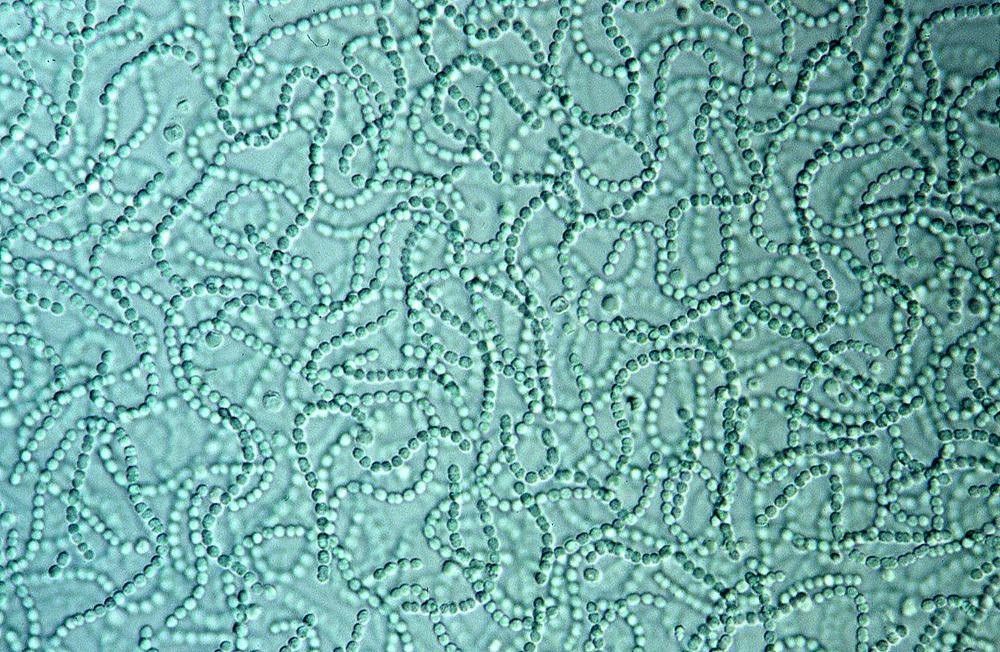A study investigating the ability of iron (Fe) to remove cyanobacteria during water treatment in purification plants has been published in Journal of Cleaner Production.

Study: A novel technology using iron in a coupled process of moderate preoxidation–hybrid coagulation to remove cyanobacteria in drinking water treatment plants. Image Credit: Dr. Norbert Lange/Shutterstock.com
What are Cyanobacteria?
Cyanobacteria are photosynthetic microscopic organisms that are frequently found in habitats with light.
Increased fertilizer imports into groundwater sources have increased the frequency and intensity of cyanobacterial growth. Their presence often leads to the release of substances such as cytotoxins and other harmful odorless substances.
Apart from this, algal organic matter (AOM) might be frequently found in water reservoirs containing a significant percentage of algae. The harmful effects of cytotoxins on human health are the core reason that researchers are focused on removing them from water reservoirs.
AOM in water has also been shown to be a key source for disinfection by-products (DBPs). All of these contaminants, particularly cyanobacteria and their derivatives, can drastically reduce the quality of consumable water and have major consequences for human health.
What is the Significance of the Coagulation-Sedimentation Process?
To supply pure, drinkable water to the community, various treatment plants employ a mix of coagulation, sedimentation, filtering, and sterilization.
The coagulation process requires the addition of iron or aluminium salts such as aluminium sulphate, ferric chloride, or others to the water. These compounds, known as coagulants, contain a positive electrical charge.
The coagulant's positive charge neutralizes the negatively charged suspended matter particles in water. The bigger particles, or floc, are heavier and sink to the depths of the water source quickly.
Sedimentation is described as this process of settling particulate matter. Conventional coagulation–sedimentation is still at the heart of contemporary water treatment methods for cyanobacterial elimination in drinking water treatment facilities (DWTPs).
Limitations of the Process
Cyanobacterial organisms are hard to remove in the coagulation-sedimentation procedure because of electrostatic interaction, membrane wettability, and floating characteristics, which increases the clogging of succeeding filtration sections.
To cater for these problems and remove harmful contaminants, especially cyanotoxins, water filtration companies opt for a rapid increment in coagulant salts with the hope that an increased concentration would lead to more efficient filtration.
However, there is no proof scientifically and experimentally that this step is advantageous. Furthermore, this method may result in a surplus concentration of metal ions, which might result in undesirable secondary contamination.
Importance of Pre-Oxidation Process
Pre-oxidation is one of the primary methods for increasing water coagulation, which is primarily targeted at removing the chemical layer on the surface of cells.
Chloride and ammonium nitrate are common pre-oxidants in DWTs. While these oxidants are frequently helpful in achieving therapeutic goals, they can have negative side effects, such as the generation of toxic by-products.
Compared to other potential oxidants, Fe (VI) in the form of potassium ferrate (K2FeO4) has long been recommended as a sustainable oxidant with no known harmful by-products.
Are Hybrid Coagulants More Effective than Individual Ones?
In comparison to individual single chemicals, hybrid coagulants (metal constituent coagulant mixed with organic coagulant) can minimize Al/Fe coagulant dose while adsorbing a significant proportion of the harmful cyanotoxins.
Surprisingly, the in-situ Fe (III) produced by Fe (VI) breakdown may simply replace the metal-based coagulant in the hybrid coagulant mechanism.
Chitosan was often employed as the biological coagulant in the hybrid setup. However, because chitosan is insoluble in water, its real applicability will be limited.
Research Findings
According to research studies, Fe (VI)-HTCC outperformed other pre-oxidation–coagulation methods, both conventional and contemporary, in macroalgal disinfection along with cyanotoxin removal.
The best dosages eliminated 92.6 percent of algal cells. Following treatment, turbidity, DOC, and MC levels reduced from 25.5 to 1.2, NTU from 23.54 to 7.63 mg/L, and MC from 16.2 to 0.96 mg/L, respectively.
The major advantage Fe (VI) displayed was its enhanced efficiency in the eradication of negatively charged hazardous toxic films adhered to water molecules surfaces without causing any harm to the cell morphology.
With the addition of a modest dosage of HTCC, in-situ Fe(III) reduced from Fe(VI) generated a very efficient hybrid coagulant that can eliminate the majority of hazardous contaminants and ameliorate barrier contamination.
In short, the novel technique of linked K2FeO4-based mild pre-oxidation–hybrid coagulation is cleaner and more successful than traditional technologies, and it may be a superior choice for cytotoxin removal in DWTPs.
Reference
Jin, Y., et al. (2022) A novel technology using iron in a coupled process of moderate preoxidation–hybrid coagulation to remove cyanobacteria in drinking water treatment plants. Journal of Cleaner Production. Available at:https://www.sciencedirect.com/science/article/pii/S0959652622005844.
Disclaimer: The views expressed here are those of the author expressed in their private capacity and do not necessarily represent the views of AZoM.com Limited T/A AZoNetwork the owner and operator of this website. This disclaimer forms part of the Terms and conditions of use of this website.